Computer Impact and Downsizing Period, 1983-1999
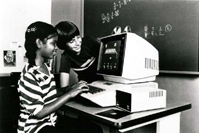 The personal computer revolution was signaled by Time magazine’s naming "the computer�? as its "man of the year�? in 1982, shortly after IBM introduced its first mass marketed personal computer. Two years later Apple introduced the popular Macintosh model, which won many educational adherents. From that time on, the world of educational technology was dominated by the trend to digitize everything audiovisual. This created additional strains for AECT as the organization sought to honor its commitment to its traditional core
The personal computer revolution was signaled by Time magazine’s naming "the computer�? as its "man of the year�? in 1982, shortly after IBM introduced its first mass marketed personal computer. Two years later Apple introduced the popular Macintosh model, which won many educational adherents. From that time on, the world of educational technology was dominated by the trend to digitize everything audiovisual. This created additional strains for AECT as the organization sought to honor its commitment to its traditional core 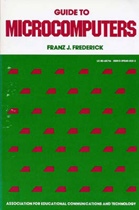 constituency—school and college media services people—while it attempted to jump aboard the computer bandwagon.
constituency—school and college media services people—while it attempted to jump aboard the computer bandwagon.1983 began with a new executive director, Lyn Gubser, who had previously served as executive director of the National Council for Accreditation of Teacher Education (NCATE). The association was reaching out for the first time for a manager who did not come from the ranks of the profession, but was more of a professional association manager. He began 1983 with a smaller and virtually all-new staff.
New Trade Show
 ?
? ?Gubser was announced as the new executive director at the end of the 1983 convention in New Orleans, the first one conducted in partnership with NAVA (soon to be renamed the International Communications Industries Association, Inc.—ICIA), sharing their trade show, COMMTEX International. Sharing the trade show meant moving the convention (pdf) to a January date instead of the traditional spring meeting, but it was considered a worthwhile tradeoff to be able to share the revenue of a much larger commercial exhibition. AECT’s own exhibition had declined to about 200 exhibitors in 1980-82, while the 1983 show attracted 318 exhibitors, with the numbers climbing to 337 in 1984 and 363 in 1985.
?Gubser was announced as the new executive director at the end of the 1983 convention in New Orleans, the first one conducted in partnership with NAVA (soon to be renamed the International Communications Industries Association, Inc.—ICIA), sharing their trade show, COMMTEX International. Sharing the trade show meant moving the convention (pdf) to a January date instead of the traditional spring meeting, but it was considered a worthwhile tradeoff to be able to share the revenue of a much larger commercial exhibition. AECT’s own exhibition had declined to about 200 exhibitors in 1980-82, while the 1983 show attracted 318 exhibitors, with the numbers climbing to 337 in 1984 and 363 in 1985.The trade show was renamed INFOCOMM in 1989 to avoid a nuisance lawsuit by the organizers of the COMDEX exposition, the ten times larger trade show of the computer industry. The partnership with ICIA continued until the 1993 convention in New Orleans.
New Initiatives
Lyn Gubser’s term as executive director featured a number of new initiatives, including:
- an invitation for members to connect to TechNet, a computer network offering e-mail, listserv, bulletin board, and database services
- editorial changes to Instructional Innovator, attempting to address themes of interest to political decision-makers and to be seen as a voice of authority on technology issues
- renovating the publications program, dropping obsolete items and commissioning new editions of seminal works
- launching a videocassette production and distribution program
- reviving the governmental relations program that had been dropped some years earlier
- improved communications with members, including a newsletter, ACCESS.

In 1985 Instructional Innovator was renamed TechTrends to emphasize its editorial aim to provide decision-makers with authoritative guidance on trends in technology. Other publishing ventures, including videocassette production, had proven to be critical, but not financial, successes.
Another Financial Crisis

By 1986 the board of directors, chaired by Robert G. Hale, decided that the continued deficits that resulted from the association’s many new ventures were unsustainable and decided once again to seek new management. This time they turned back to the ranks of the membership, choosing Stanley D. Zenor to serve as association manager. Zenor, learning resources director at St. Louis Community College, had been active in leadership roles, especially regarding the convention, for many years. Once again, there was a round of staff downsizing and tightened fiscal management.
Serving as president during these times of stress were five higher education professionals and one from a state education department:
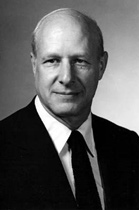
- 1982-1983, Elwood E. "Woody�? Miller, director, Educational Media Center, University of Colorado [His term was extended because of the move of the convention from spring to January. The following presidents’ terms fit the calendar year.]
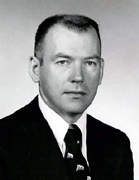
- 1983, Paul Welliver, professor, Instructional Systems, Pennsylvania State University
- 1984, Francis M. Dwyer, professor, Instructional Systems, Pennsylvania State University
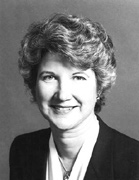
- 1985-1986, Robert G. Hale, coordinator, Learning Resources and Educational Technology, Connecticut state education department
- 1987, Elaine K. Didier, library director, School of Business, University of Michigan
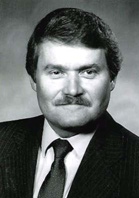
- 1988, Don C. Smellie, professor of education and chair, Department of Instructional Technology, Utah State University
 New Journal Lineup
New Journal Lineup In an economy move in 1988, it was decided to merge the Journal of Instructional Development (JID) and Educational Communication and Technology (ECTJ) under the new name of , beginning in 1989. The intention was to broaden the scholarly journal’s scope to encompass the scholarship of instructional development as well as the scholarship of research and theory. To do this, the journal was divided into two sections, Research and Development, each with its own editor and editorial board. The first editors were Howard Sullivan (for Research) and Norman Higgins (for Development), both of Arizona State University.
TechTrends also underwent change, incorporating more content from AECT Divisions, as an alternative to having divisions produce their own periodical publications. It also became peer-reviewed at this time, making it a more attractive publishing venue for college professors, whose scholarly productivity is measured in part by their success in activities that are reviewed by peers.
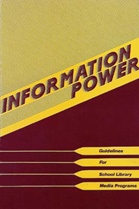 The non-periodic publications program focused on providing materials directed within the profession, such as standards for community college and university learning resources programs and guidebooks for division presidents and convention planners. A major accomplishment was the publication in 1988 of Information Power: Guidelines for School Library Media Programs, the latest in the series of collaborations with AASL on professional standards for school library media programs. The publication was announced by means of a teleconference that was downlinked to every state in the U.S. plus sites in Canada.
The non-periodic publications program focused on providing materials directed within the profession, such as standards for community college and university learning resources programs and guidebooks for division presidents and convention planners. A major accomplishment was the publication in 1988 of Information Power: Guidelines for School Library Media Programs, the latest in the series of collaborations with AASL on professional standards for school library media programs. The publication was announced by means of a teleconference that was downlinked to every state in the U.S. plus sites in Canada. At the urging of Don C. Smellie, president in 1988, the board approved the concept of local chapters. The purpose was to promote local activity and affiliation among individuals who were members of AECT but not members of the one of the constituent state affiliates (mainly oriented toward K-12 school interests). Three experimental chapters were authorized: Utah State University, West Central Wisconsin, and Southwest Virginia.
By the end of 1988 the association was out of debt and had begun to build a cash reserve fund. Zenor’s title was changed in 1989 to executive director. A strategic plan was also adopted, the result of committee work conducted under three consecutive presidents and boards of directors between 1987 and 1989.
In April 1990 the association moved to a new location for only the second time in its history, from 1126 Sixteenth Street, NW to 1025 Vermont Avenue, NW, in Washington DC. It also took the occasion to replace its antiquated computer system with a new one. For the first time, the staff and the board members were subscribed to the same computer network, Bitnet, which had become the common denominator for university e-mail systems.
Stabilization in Early and Mid 1990s
Through the early and mid 1990s AECT enjoyed a period of stability under the fiscal management of executive director Stan Zenor. Membership hovered around 4000 (pdf); the conventions, with the INFOCOMM exhibition, continued to be successful; and the association regularly conducted two summertime programs: a Professional Development Seminar at a university campus and a Summer Leadership Conference at a resort setting. The latter provided an important opportunity for division and committee heads to meet face-to-face with members of their units and with other association leaders. A good deal of the work of the organization was accomplished during these conferences.
In 1994 the board of directors adopted a strategic plan, the Vision 2000 Strategic Plan. It helped to set goals and priorities for the next few years. That year also saw the publication of the association’s most recent effort to define the field and its terminology, Instructional Technology: The Definition and Domains of the Field. It was the result of three years’ deliberations by the Committee on Definition and Terminology, led by Barbara B. Seels, University of Pittsburgh, and Rita Richey, Wayne State University. It proposed this shorthand definition of the field:
Instructional Technology is the theory and practice of design, development, utilization, management and evaluation of processes and resources for learning.
That is, the definition virtually equated instructional technology with the instructional design process, indicating that by this time instructional design had become the central focus of the field, as opposed to the association’s earlier focus on audiovisual media (1963) and then on problem-solving processes (1977).
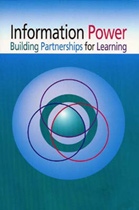 Another Collaboration with AASL
Another Collaboration with AASL In 1969, 1975, and 1988 AECT had partnered with AASL to produce a set of professional standards (later "guidelines�?) for school media centers. This partnership was revived again between 1995 and 1997 when committees from the two associations worked again to chart the future of the media center. This most recent vision, published in 1998 (Information Power: Building Partnerships for Learning), put special emphasis on students’ attainment of "information literacy�? as an essential ingredient in their overall curriculum.
Despite these positive developments, troublesome issues lurked just beneath the surface. A primary one was potential membership growth. What was becoming clear by this time was that AECT was not likely to win into its constituency the great numbers of educators serving as computer coordinators at the school building and district level. These were the successors to the audiovisual coordinators of an earlier generation, those who were in the vanguard of the latest technology.
Another organization, the International Society for Technology in Education (ISTE), founded in 1989, had become the professional home for this constituency. Although AECT and ISTE held merger talks during this period, they did not come to fruition.
Presidents during this period:
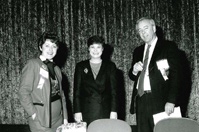
- 1989, Robert E. Holloway, associate professor of education, Northern Arizona University
- 1990, Lucy
 Ainsley, director, Instructional Technology, Birmingham MI public schools (She suffered an aneurysm while she was president-elect and spent most of her presidential year recuperating. Holloway, who preceded as president, Tipling, who followed, and the other executive committee members filled in as needed to execute the presidential duties.)
Ainsley, director, Instructional Technology, Birmingham MI public schools (She suffered an aneurysm while she was president-elect and spent most of her presidential year recuperating. Holloway, who preceded as president, Tipling, who followed, and the other executive committee members filled in as needed to execute the presidential duties.)
- 1991, Roger Tipling, professor, Instructional Media Technology, Southwest Missouri State Unversity (He served six consecutive years on the executive committee, from secretary-treasurer-elect through past-president.)

- 1992, Larry Kitchens, director, Instructional Services, Texas Christian University
- 1993-1994, Addie Kinsinger, KAET-TV and Arizona State University (Since the convention was moved to February, she served 13 months; later presidents’ terms again overlapped over two calendar years.)
- 1994-1995, Kent Gustafson, professor and chair, Instructional Technology, University of Georgia
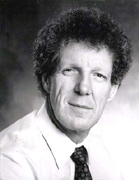
Convention Restructure
After the 1993 convention in New Orleans, AECT ended its eleven-year partnership with ICIA and the INFOCOMM trade show by mutual consent. ICIA wanted to partner with a larger association, and AECT was dissatisfied with the revenue sharing arrangement with ICIA, including ICIA’s accounting practices. From the 1994 through 1999 conventions (pdf) AECT organized its own trade show, known as InCITE. However, the number of exhibitors tailed off sharply after 1996…from 156 to 121, to 66, and finally to only 26 in 1999.
Evolution of Divisions
The division structure established in the 1970 constitution and by-laws continued to serve members’ interests, with incremental additions over the years, representing the evolution of members’ concerns.
| Divisions in 1976 | Divisions in 1996 |
| Educational Media Management Instructional Development Industrial Training and Education Information Systems International Media Design and Production Research and Theory Telecommunications |
Educational Media Management Instructional Development Industrial Training and Education Interactive Systems and Computers International Media Design and Production Research and Theory Telecommunications Systemic Change in Education Learning and Performance Environments School Media Specialists |
Erosion in the Late 1990s

As revenue from the convention diminished in the late 1990s, so did the AECT budget. For several consecutive years the two main sources of revenue—convention income and membership dues—had fallen below projections and were declining. Early in 1998 it became clear that AECT was in serious financial jeopardy. Pres. Robert A. Harrell appointed a presidential task force, chaired by Lynn Milet, to make recommendations about the association’s future. The task force gave its report on July 6, 1998, recommending financial cutbacks, a strategic focus on a smaller audience, collaborative arrangements with other organizations, reorganization of the headquarters office, a return to providing basic member services, and a focus on electronic delivery of services. The Board accepted these recommendations and established an AECT Renewal Implementation Task Force with several subcommittees to carry out the recommendations.
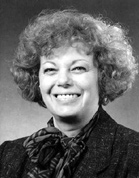
The presidents during this critical period were:
- 1995-1996, Lynn Milet, director, Instructional Technology Services, Lehigh University
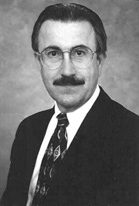
- 1996-1997, William Burns, president, Phoenix Learning Group
- 1997-1998, Franz Frederick, professor, Instructional Technology, Purdue University

- 1998-1999, Robert A. Harrell, dean, Learning Resources, DeKalb College, Georgia
- 1999, Kyle Peck, associate professor, Instructional Systems, Pennsylvania State University
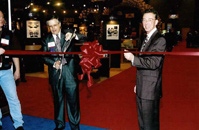 Implementation of AECT Renewal, 1999
Implementation of AECT Renewal, 1999 Under the leadership of the new president, Kyle Peck, rapid and decisive action was taken on several fronts to relocate and reorganize the headquarters office. First, it was decided to move out of the "high rent�? locale of Washington DC, AECT’s home since its inception. This precipitated a problem with the unionized members of the headquarters staff, who launched legal action regarding their release. This was settled prior to the binding arbitration hearing, thanks to a financial settlement offer made possible by the contribution of an anonymous donor.
Second, Stan Zenor, the executive director, chose to find a new position in the DC area rather than move to a new location. The subcommittee on Relocation invited proposals for a new headquarters location. After site visits to the top three applicants, the proposal of the Agency for Instructional Technology (AIT) was accepted in April 1999. This meant that AECT’s new home would be in Bloomington, Indiana, sharing quarters in the AIT building.
By June 1999 a management agreement was in place, and by July 14 the association’s goods and chattels were moved from Washington DC to Bloomington, Indiana and AECT was doing business at 1800 N. Stonelake Drive.
James A. Pershing, a professor of Instructional Systems Technology at Indiana University, was asked to take the role of acting executive director, with Carthell Everett, a School of Education staff member, acting as associate executive director of the association. They immediately set to work on the backlog of unanswered e-mail messages, overdue bills, and unpublished issues of TechTrends that had accumulated since the reorganization began. They served in those offices until September 1999. Pershing continued as Editor-in-Chief of TechTrends from May 1999 through March 2000.
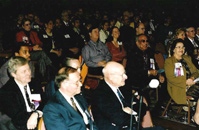 During this transition period, Michael Sullivan, executive director of AIT, served as senior advisor, as AIT had a contract to provide overall management services to the association. Phillip Harris, who had served as associate executive director of Phi Delta Kappa, became executive director in September 1999. Under new leadership, AECT continued as an "umbrella�? organization, attracted to its broad scope, bringing together teachers, school and district media specialists, professors and graduate students of instructional technology, corporate instructional designers, military training designers, multimedia developers, and others. By late 1999, professors and graduate students comprised about 60% of the membership, while school media specialists—building, district, and regional—comprised about 30%.
During this transition period, Michael Sullivan, executive director of AIT, served as senior advisor, as AIT had a contract to provide overall management services to the association. Phillip Harris, who had served as associate executive director of Phi Delta Kappa, became executive director in September 1999. Under new leadership, AECT continued as an "umbrella�? organization, attracted to its broad scope, bringing together teachers, school and district media specialists, professors and graduate students of instructional technology, corporate instructional designers, military training designers, multimedia developers, and others. By late 1999, professors and graduate students comprised about 60% of the membership, while school media specialists—building, district, and regional—comprised about 30%. 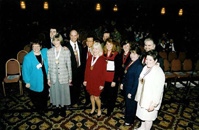
So, at the end of the 20th century AECT was considerably changed from its original composition of school administrators and school visual instruction coordinators. What remained constant through the years was the mission—helping people learn more efficiently and effectively through the use of the best technologies available at the time.
Unless specified otherwise, all material on this site is © 2001 by AECT
Association for Educational Communications and Technology
1800 N. Stonelake Dr. Suite 2
Bloomington, IN • 47404
877-677-AECT
812-335-7675
Contact:
Association for Educational Communications and Technology
1800 N. Stonelake Dr. Suite 2
Bloomington, IN • 47404
877-677-AECT
812-335-7675
Contact: